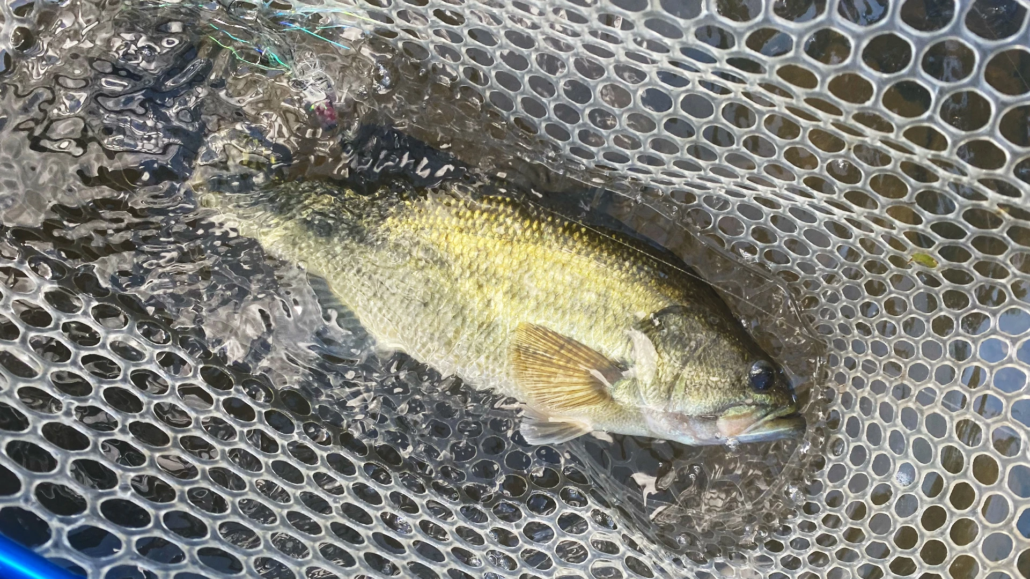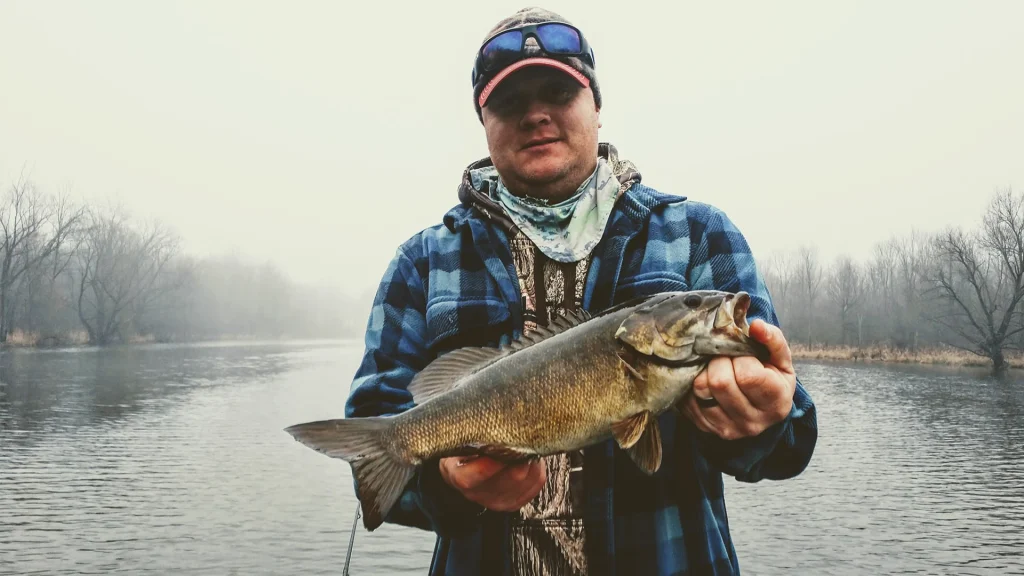Fishing for Smallmouth vs. Largemouth Bass in Winter: A Comprehensive Guide
As winter sets in, bass fishing presents a unique set of challenges. While both smallmouth and largemouth bass slowdown in colder water, they each have distinct behaviors, habitat preferences, and feeding patterns that require anglers to adjust their techniques. Understanding these differences is essential for a successful winter fishing trip. Let’s dive into the key differences between fishing for smallmouth and largemouth during the winter months.


Behavioral Differences: Temperature Preferences and Activity Levels
One of the primary differences between smallmouth and largemouth bass in winter lies in their temperature tolerances and overall activity levels. Smallmouth bass are more cold-tolerant than largemouth and tend to remain active even when water temperatures drop into the 40s. As a result, smallmouth are often found deeper in the water, where the temperature remains more stable. These fish are more likely to actively hunt for food, albeit at a slower pace than during warmer months.
Largemouth bass, however, prefer warmer waters (typically between 50°F and 60°F in winter), and their activity level decreases significantly when water temperatures drop below this range. They become sluggish, making them harder to catch. During the winter, largemouth tend to seek shelter in shallow coves or move to deeper, more stable areas where the water temperature is more consistent.
These behavioral differences mean that targeting smallmouth often requires a focus on deeper, colder water, while largemouth are more likely to be found in areas that offer some protection from the chill.
Preferred Habitats: Where to Find Winter Bass
Both smallmouth and largemouth bass have different habitat preferences during the winter, shaped by their behavior and environmental needs. Smallmouth bass tend to prefer deeper waters, often near rocky structures, drop-offs, and ledges. These locations offer both shelter and a consistent water temperature. Smallmouth are more common in clearer, cooler lakes and rivers, which help keep them active during winter months.
Largemouth bass, on the other hand, are more likely to seek out cover such as submerged logs, brush piles, and vegetation. In winter, they tend to move to shallower, protected areas, such as coves, where the water is slightly warmer and more stable. These areas offer the warmth and shelter largemouth need to conserve energy during the colder months.
Understanding where each species prefers to reside can greatly improve your chances of success. For smallmouth, deeper and clearer waters are key, while largemouth are more often found around cover in shallower, protected zones.
Feeding Patterns: Slow and Steady vs. Lethargic Strikes
Both smallmouth and largemouth bass eat less in winter, but they have different feeding patterns that affect how anglers should approach their fishing.Smallmouth bass are more likely to strike at slow-moving baits because they remain relatively active, even in colder waters. Smallmouth are still willing to feed when the water temperature drops into the 40s and 50s°F. Using vertical jigging, deep-diving crankbaits, or drop-shot rigs are effective techniques, as they mimic the slow, injured movements of prey that entice these bass into biting.
Largemouth bass, however, are much more lethargic in winter. As their metabolism slows, they require slower, smaller baits to coax them into striking. Dragging jigs or using soft plastics (like worms or creature baits) along the bottom works best, as the slower presentation suits the bass’s sluggish feeding behavior.
While smallmouth are more likely to strike at active, slow-moving baits, largemouth require a deliberate, slow presentation that stays close to the bottom.


Transparent shining clear ice close-up sparkling on frozen wild lake surface in sunset light. Cold winter nature with blurred background in selective focus
Fishing Tactics: Tailoring Your Approach
To effectively target either smallmouth or largemouth bass in winter, you’ll need to adjust your fishing tactics based on their behavior and feeding habits. Smallmouth bass respond well to techniques like vertical jigging, deep-diving crankbaits, and drop-shot rigs. Focus on deep, rocky areas where smallmouth bass are more likely to congregate. A slow but steady retrieve will keep your bait in the strike zone long enough for the fish to bite.
Largemouth bass requires a much slower approach. Dragging jigs or using soft plastics on the bottom with a slow, steady retrieve is crucial. Try fishing near cover such as submerged logs or brush piles where largemouth are likely to be hiding.
In both cases, patience is key. Winter fishing for bass requires slower presentations, with a focus on finding the right depth and location for each species.
Conclusion: Success Lies in Adaptation
Winter bass fishing for smallmouth and largemouth bass can be a highly rewarding experience, but understanding the behavioral differences between these two species is crucial. Smallmouth are more active in colder waters and tend to stay in deeper, rockier areas, while largemouth seek warmer, more sheltered zones. By tailoring your fishing tactics to their unique feeding patterns and habitat preferences, you’ll increase your chances of success.
pengemar, slots pernahkah mendengar semboyan “slot demo” Kalau belum? siap-siap cinta, konsep jatuh slot gacor sama merupakan ini. slots sering mesin memberi yang win Yup mesin-mesin. disebut, adalah ini bisa andalannya tuk membawa pulang cuan. any way cemana tapi, cemana sih {caranya|



